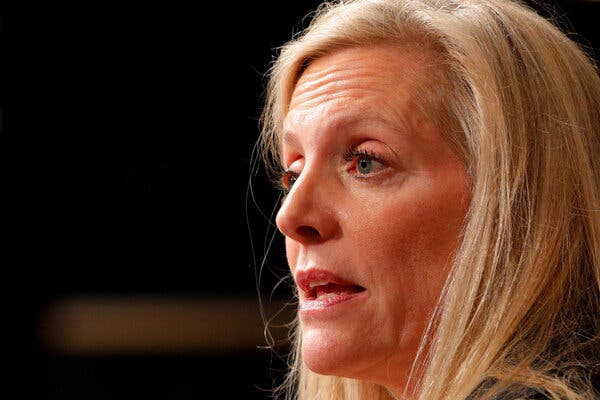Longer-term interest rates have jumped in recent weeks, a move that has been broadly interpreted as a sign that investors are betting higher growth and slightly faster inflation may be right around the corner.
Federal Reserve officials have mostly brushed off the increase to date, saying it is a signal of economic optimism. But many investors have wondered whether the central bank might feel a need to intervene. The adjustment has at times roiled stock markets, which tend to sink when interest rates increase, and it could weigh on consumer spending and growth if it is sustained and borrowing becomes more expensive.
Jerome H. Powell, the Fed’s chair, is set to speak at noon on Thursday at a Wall Street Journal event, where he may be asked to address the recent bond activity.
Many on or adjacent to Wall Street have begun to put forward a two-part question: They are curious whether the Fed will step in to keep rates low and, if so, how. Below, we run through a few of the most likely options, along with plain-English explainers of what they mean and how they work.
First, a little background.
The yield on a 10-year Treasury note, a reference point for the cost of many types of borrowing, has popped since the start of the year. After dropping as low as about 0.5 percent in 2020, the yield jumped to 1.6 percent during the day last Thursday. It hovered around 1.5 percent by Wednesday.
That is still very low by historical standards: The 10-year yield was above 3 percent as recently as 2018, and in the 1980s it was double digits. But a rapid adjustment in longer-term rates around the world has drawn attention. Global officials like Christine Lagarde, head of the European Central Bank, have voiced concern about the increases.
U.S. officials have generally painted the adjustment as a sign that investors are growing more optimistic about growth as millions of Americans begin receiving Covid-19 vaccines and the government supports the economy with spending. And while markets appear to be penciling in slightly higher inflation, Fed officials had been hoping to push price expectations — which had been slipping — a little bit higher.
“If you look at why they’re moving up, it’s to do with expectations of a return to more normal levels, more mandate-consistent levels of inflation, higher growth, an opening economy,” Mr. Powell said of rates during a hearing on Feb. 23.
But last week’s gyrations prompted U.S. officials to make clear they’re watching to make sure that market moves don’t counteract the Fed’s policies, which make borrowing inexpensive to encourage spending and help the economy recover more quickly.
“I am paying close attention to market developments — some of those moves last week and the speed of those moves caught my eye,” Lael Brainard, a Fed governor, said at a Council on Foreign Relations webcast on Tuesday. “I would be concerned if I saw disorderly conditions or persistent tightening in financial conditions that could slow progress toward our goal.”
The question is what the Fed could do if rates get too high.

Buying longer-term bonds is one option.
The Fed’s most obvious choice to push back on a surge in longer-term bond yields is to just buy more of the bonds in question: If the central banks snaps up five-year, 10-year or 30-year securities, the added demand will push up prices, forcing yields — which move in the opposite direction — lower.
The Fed is already buying $120 billion in mortgage-backed securities and Treasury bonds each month, a program it started last year both to soothe markets and to make many types of credit cheaper. Right now, it’s purchasing many types of bonds, but it could shake up that approach to focus on longer-term debt.
There’s precedent for such a maneuver. The Fed bought long-term bonds to push down interest rates and bolster the economy in 2011. A similar policy was used in the 1960s. Economists and business networks often call such policies either “maturity extension” — shifting future purchases toward longer-dated debt — or “Operation Twist,” which tends to refer to selling short-term notes while buying longer-term bonds.
Promising to ‘cap’ certain yields is another.
The Fed’s more drastic option is called “yield curve control.” While it sounds nerdy, the approach is simple. The central bank could just pledge to keep a certain rate — say the five-year Treasury yield — below a certain level and buy as many bonds as necessary to keep that cap in place.
Other central banks around the world, including the Bank of Japan and the Reserve Bank of Australia, have used yield curve control. But the tool carries risks: For example, it could force the Fed to buy huge sums of bonds and vastly expand its balance sheet in a worst-case scenario. That could matter for perceptions, since politicians sometimes criticize the Fed’s growing holdings, and it might have implications for market functioning.
Mary C. Daly, the president of the Federal Reserve Bank of San Francisco, told reporters on Tuesday that she was not worried about the yield curve yet. But she suggested that if the Fed did need to do something, shifting to long-term purchases would probably be preferable.
“Right now I don’t think of yield curve control as something we would implement, myself, right away,” she said.